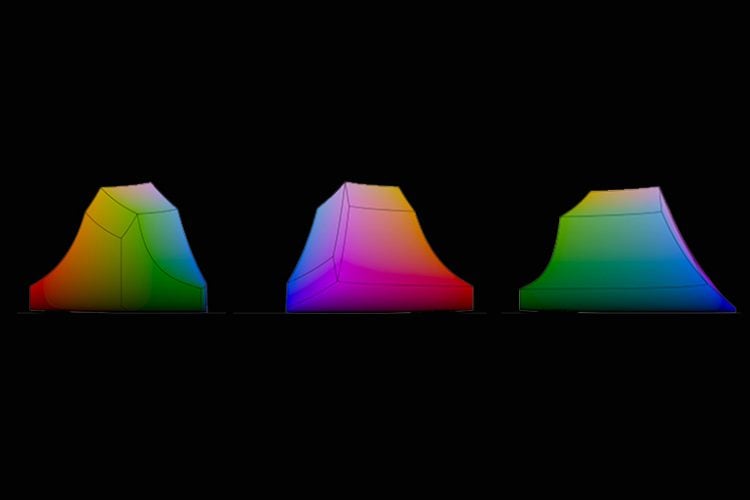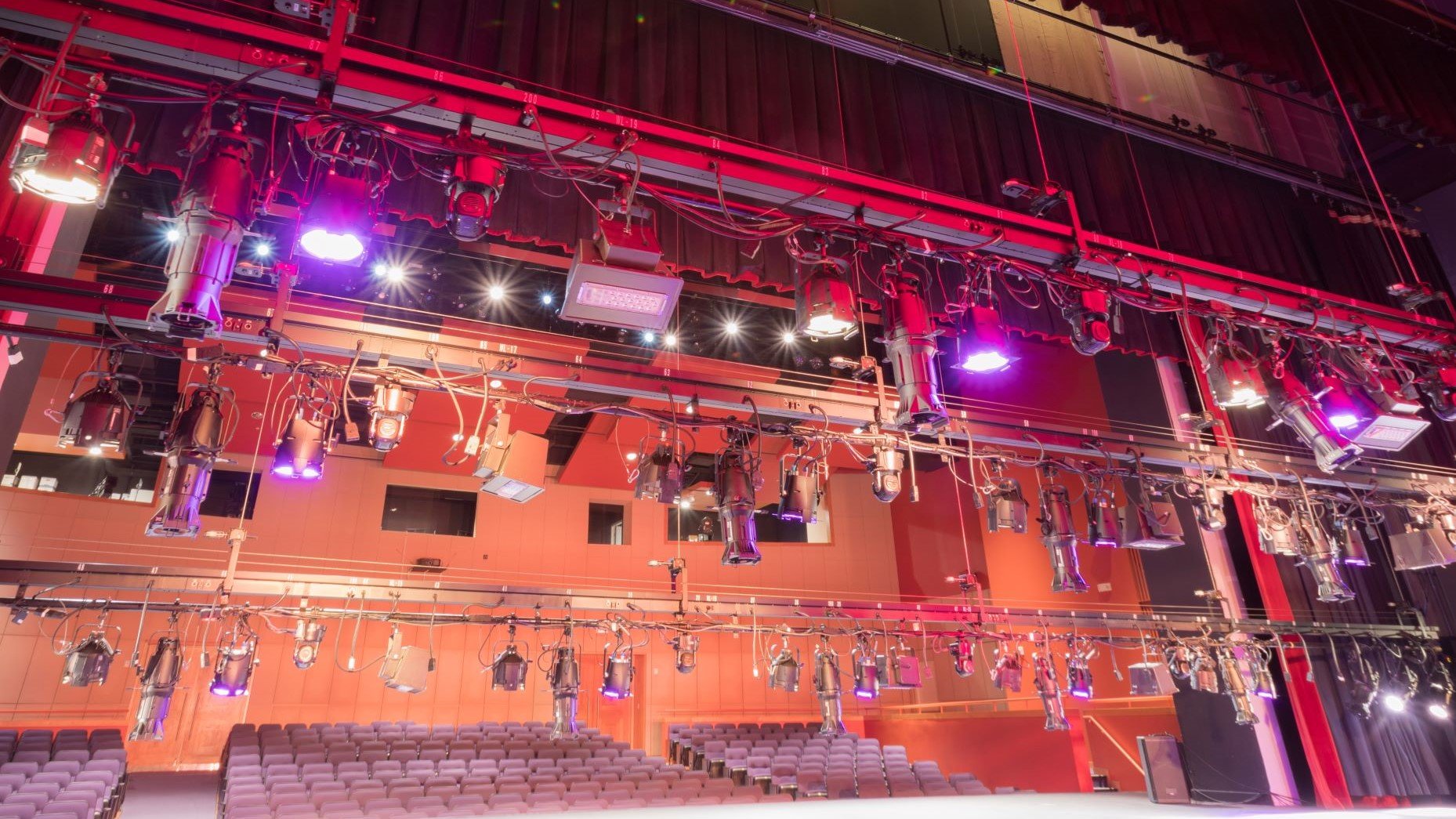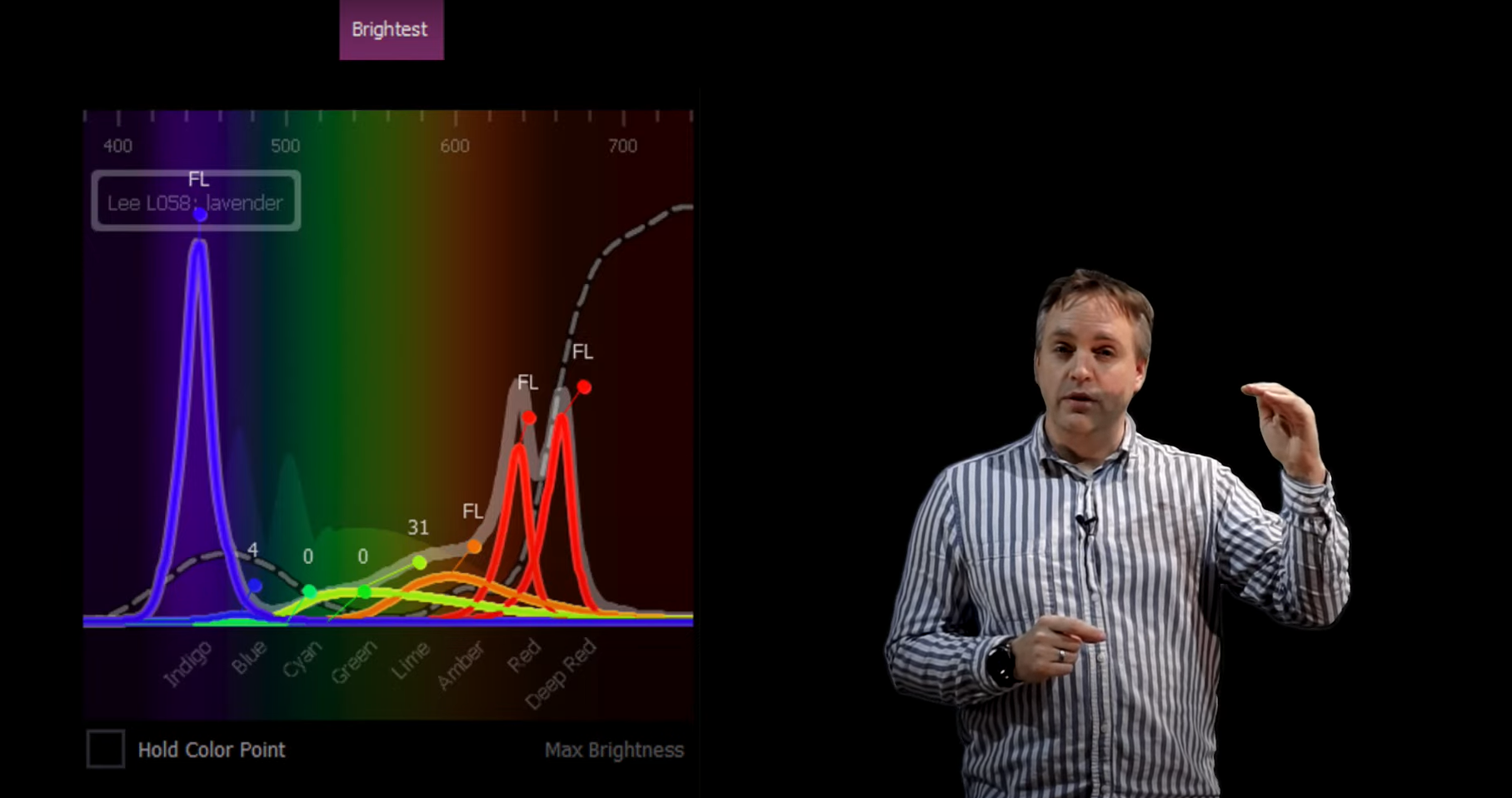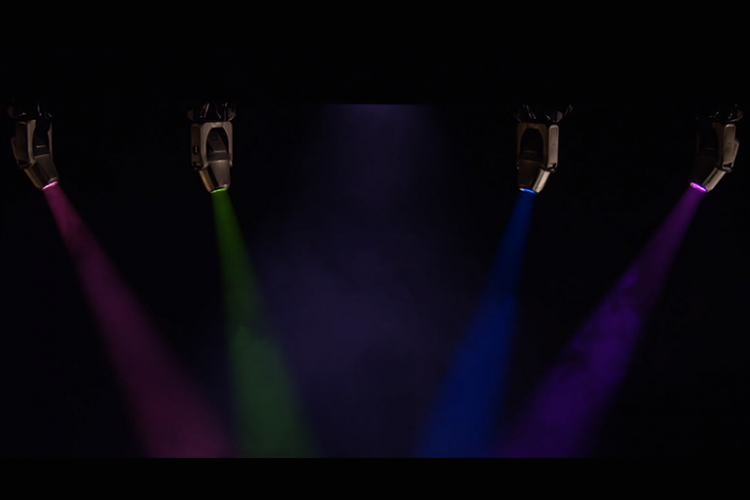We’ve mentioned additive color mixing time and time again, but what do we really mean and how is it different than subtractive mixing? To help demonstrate what happens with additive and subtractive mixing systems, we asked our advance research group and our industrial design team here at ETC to help us out.
Subtractive Color Mixing
Let’s start with subtractive color mixing. This is the color mixing many of us grew up with. Before we ever had the option of colored LEDs, we had to add a color filter, like gel or dichroic glass, in front of an incandescent light source and watch the color turn from bright white to a deep red, soft amber, or pale pink. But what’s really happening?
White light is a mixture of all colors in the visible spectrum. When you place a color filter in front of the white light source, you subtract the pieces of the spectrum you don’t want to see and let through the pieces you do.
Unfortunately the more saturated the gel color, the more light you lose in transmission. It’s easy to see how a 16,000-lumen luminaire is quickly reduced to a 3,000-lumen luminaire. In the graph below we represent how placing a filter in front of a full spectrum of light subtracts individual wavelengths until you’re left only with the deep purple you are looking for.
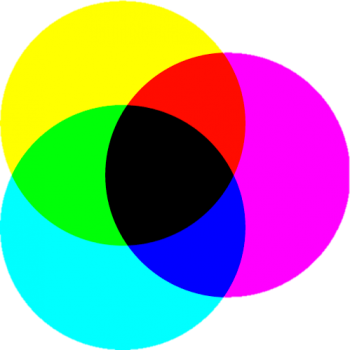

Additive Color Mixing
Now let’s take a look at additive color mixing. With LEDs, there is no filter to place in front of the light source. The light source itself is colored. This means that instead of subtracting individual wavelengths, you add the colors you need in the intensity you want to arrive at the color you desire.
When you add all of the colors together at full intensity, you end up with white light.

This is what ETC’s additive color system – as used in Relevé Spot and Source Four LED, is based on. Where Relevé Spot really shines is in the deep, bold colors. The more colors you add, the brighter the light actually gets. There is no color filter or color subtraction happening here.
You’ll see in the color model below what actually happens with Relevé Spot as we add color after color to create some of the brightest blues, reds, and purples on the market.
This is a standard CIE color chart. The four-color points of Relevé Spot LEDs are called out – red, green, indigo, and lime.
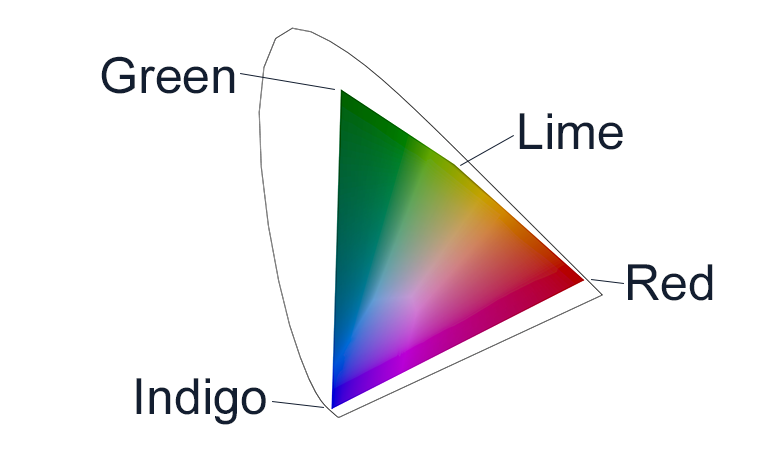
If we tip the color chart on its side you start to see where the color points add up.
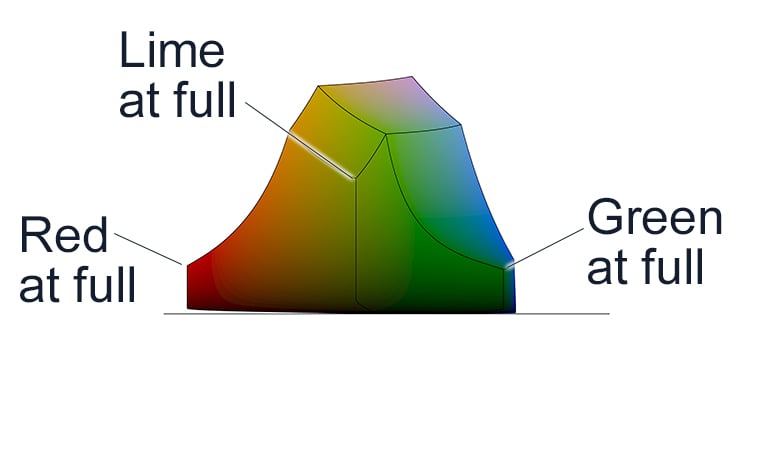
As we add in additional colors, you can see how the brightness increases exponentially. For example, the point where green meets indigo in the color space is the combination of both the green and indigo LEDs at full. The point where red meets indigo is the combination of both of those LEDs at full. When you add the green/indigo and the indigo/red, you can see how the peak is the combination of all three of those LEDs together. The top-most peak of the color chart below is the brightest and represents what happens when all four LEDs – red, green, indigo, and lime – are on at full at the same time. This is the brightest possible color and point that can be created by Relevé Spot.
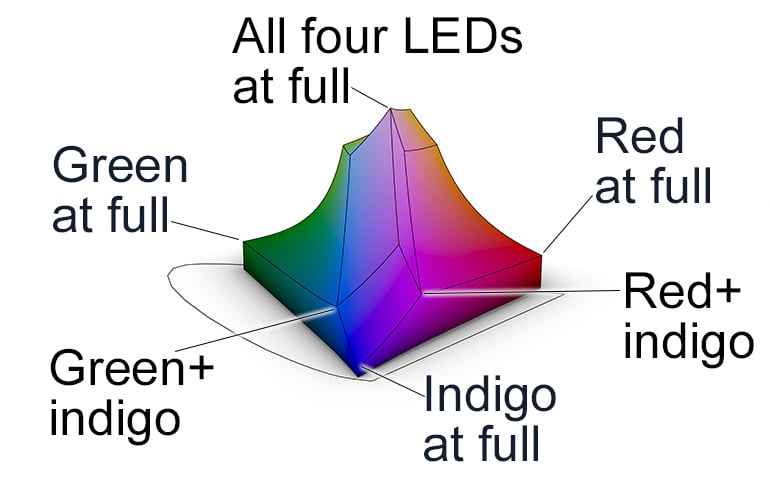
More color and increased brightness mean fewer fixtures needed in a rig to get the intensity you need with the color you want. Not only that, but color rendering on costumes and skin tones becomes a far easier task because you can tweak and add and subtract as you need to on the fly.


